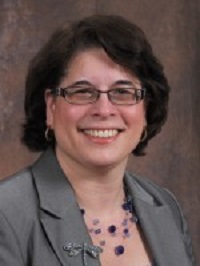Did you know Critical Care Medicine is a subspecialty with physicians coming from a variety of background specialties? For example, Dr. Christine D’Arsigny has worked in both the Department of Critical Care Medicine and Respirology in Kingston. She is an associate professor at Queen’s University having started at Queen’s in 1998 and says most doctors in Critical Care Medicine have completed two or three specialties and have trained for six to eight years after medical school to become a Critical Care specialist.
both the Department of Critical Care Medicine and Respirology in Kingston. She is an associate professor at Queen’s University having started at Queen’s in 1998 and says most doctors in Critical Care Medicine have completed two or three specialties and have trained for six to eight years after medical school to become a Critical Care specialist.
“We have all acquired the knowledge and skills to work in the intensive care unit, but we come with experience in General Medicine, Respirology, Anesthesiology, Emergency Medicine, General Surgery, Neurology, Infectious Diseases, Nephrology, Cardiology and many other specialties,” Dr. D’Arsigny explains. “We work together to ensure the patient is receiving the most up-to-date care.”
Speaking on her research work, Dr. D’Arsigny describes how she has collaborated with the Divisions of Respirology and Cardiology over the years to study pulmonary hypertension, dyspnea and exercise limitation following acute pulmonary embolism. “I am presently involved in acute pulmonary embolism research in collaboration with the Emergency Department, as well as collaborating on clinical trials in the Critical Care Department,” she says.
Dr. D’Arsigny’s area of teaching is respirology and pulmonary hypertension-focused. “I also have a strong interest in teaching mechanical ventilation and I have been a teaching member of the National Acute Critical Event Simulation (ACES) course, focusing on mechanical ventilation, for the last decade,” she explains. “I am also developing a series of modules to better teach mechanical ventilation to our trainees. I give lectures in the medical school curriculum, teach rotating ICU residents and Internal Medicine, Respirology and Critical Care trainees.”
Clinically speaking, Dr. D’Arsigny works in a multidisciplinary ICU. “I work with medical, surgical, neurologic, neurosurgical and trauma patients. I have a lot of experience caring for the post-operative cardiac patient, with my clinical expertise being in respirology and cardiovascular diseases,” she describes.
One myth Dr. D’Arsigny wishes to debunk about Critical Care Medicine is how people think of the ICU as a place where the very sick come, get treated and within a few days are ready to leave. “Unfortunately, an average of one third die from their illness within the ICU despite our efforts, with many other patients being critically ill for weeks and a small proportion requiring long-term management. Acute resuscitation is an important part of our job, but we spend more time managing sub-acute and chronic illnesses,” she says. “We work to try and avoid ICU-related weaknesses and infections and dedicate time in our day to communicate with patients and family.”
The future of the field of Critical Care Medicine requires ongoing interdisciplinary teamwork, according to Dr. D’Arsigny. “In addition to needing more nurses, we need more physical therapists, occupational therapists, respiratory therapists, pharmacists, speech and language pathologists, social workers, personal support workers, dieticians and physicians to offer the best care.”
